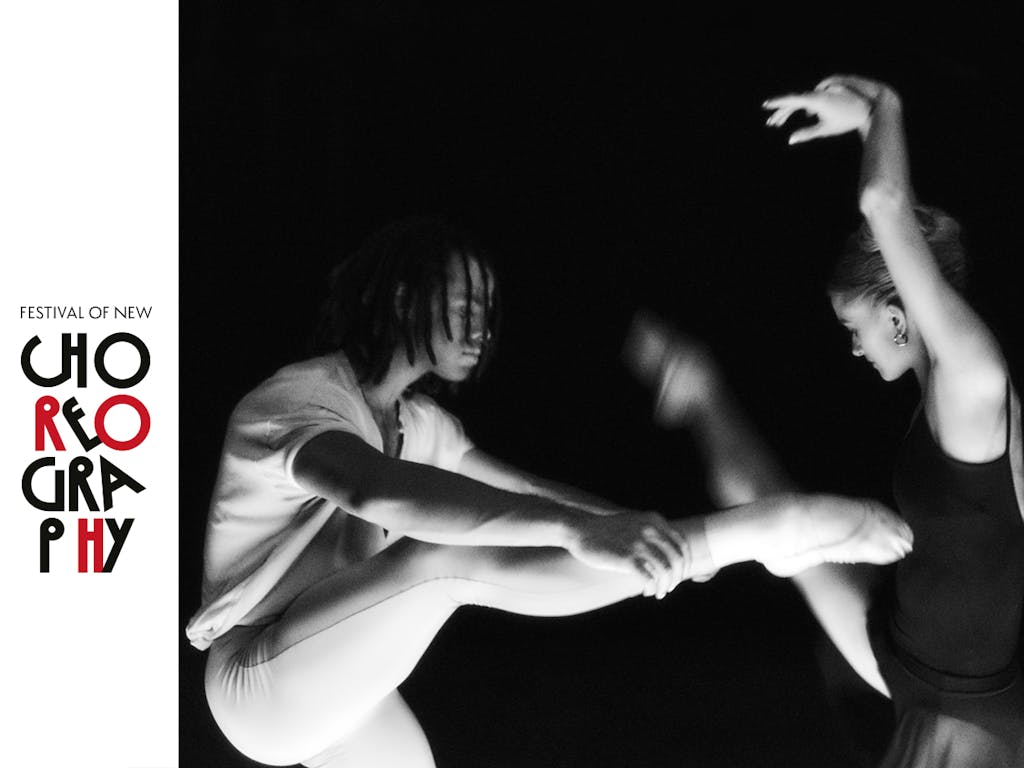The Movement of Blindness in Dance
An article by Devon Healey for Dark With Excessive Bright
Robert Binet and his long-time collaborator Devon Healey invite you to Dark with Excessive Bright, where the perceptions and artistry of blindness take the stage through Immersive Descriptive Audio (IDA). The IDA will be captioned for d/Deaf audiences and the whole experience will be available on the mobile phones of audience members. Healey tells of her motivations and creative process behind developing IDA.

More than a decade ago I saw something, something unexpected and frightening.
I did not speak a word of what I saw hoping that if I remained silent, this something would disappear into the nowhere from which it came. This something kept reappearing, dancing before my eyes for me and for me alone. Its movements, the dynamic pull of its neon colours and shimmering swirls, compelled me to break my silence; to speak, to tell of its beauty, its mystery, its wisdom.
And yet, what I saw had been with me long before I ever noticed its presence. I wonder… I wonder if it was I that noticed it or if it noticed me. I’ve come to see that what I saw more than a decade ago, what was so unexpected and so frightening, was blindness.
Blindness completely changed my life and this change was, and still is, disturbing. It didn’t end there. Blindness brought an intrigue. It wrote many stories of the eyes, stories never told by sight. Just as intriguing, blindness began to speak of movement, a movement my body had never felt before. Walking down the street, picking up a glass, making eye contact, all of this was now an intricately choreographed dance. Blindness put me in touch with a new world altogether.
I have spent the last few years writing about the feel of my blindness culminating in a PhD in Disability Studies from the University of Toronto and publishing my first book, Dramatizing Blindness: Disability Studies as Critical Creative Narrative. One of the animating questions of my life and work is, how do I make the feel and perceptions, the artistry, of blindness accessible to both blind and sighted people? Questions of accessibility nearly always flow in one direction, making visual events, such as the ballet, accessible to blind people. I try to reverse this flow or at least, disturb it a little. My question becomes – how can blindness and sight develop a rapport, a rapport necessary for any sort of accessibility? I explore this rapport through the dynamic relationship between the theatre itself and its audiences. How might blindness and sight come together in the theatre in such a way that does not simulate blindness nor privilege sight?
As a way to artistically engage these questions, I am developing, what I call, Immersive Descriptive Audio (IDA). In this way, I hope to disturb the isolation of the senses. Sight, the silent act of watching the dancing body and sound, the voice description of that body coming in IDA. This work develops a rapport between blindness and sight through a soundscape giving voice to that which does not always appear. IDA disturbs the senses and brings the intrigue of blindness to the fore.
- LINBURY THEATRE
Dark with Excessive Bright
- BALLET AND DANCE
An immersive work by Robert Binet premieres in the Linbury Theatre, performed by The Royal Ballet for the Festival of New Choreography.

You can find out more about Dark with Excessive Bright by watching the introductory video
or by listening to the pre-show audio
Primary image alt text: How to describe myself? In this picture, as always, my brown hair is swept up into a puffy bun that sits high atop my head – my signature do! I am semi-reclined in a plush red velvet seat in the audience of Hart House Theatre at the University of Toronto. My legs are outstretched, and my feet are crossed resting on the back of the seat in front of me. A chandelier hangs, glowing, in the background. I have just removed my dark sunglasses; they are in my right hand with one of the arms of the glasses pressed between my lips. As I sat in this empty theatre, I thought about all the stories that had been told on this stage and, of the people that had sat in this seat before me and all that would after me. A smile began to travel across my face as my blue-eyes moved to the left. SNAP! The photographer captured me in this moment as my thoughts turned to blindness and all the stories to come…
Royal Opera House Covent Garden Foundation, a charitable company limited by guarantee incorporated in England and Wales (Company number 480523) Charity Registered (Number 211775)